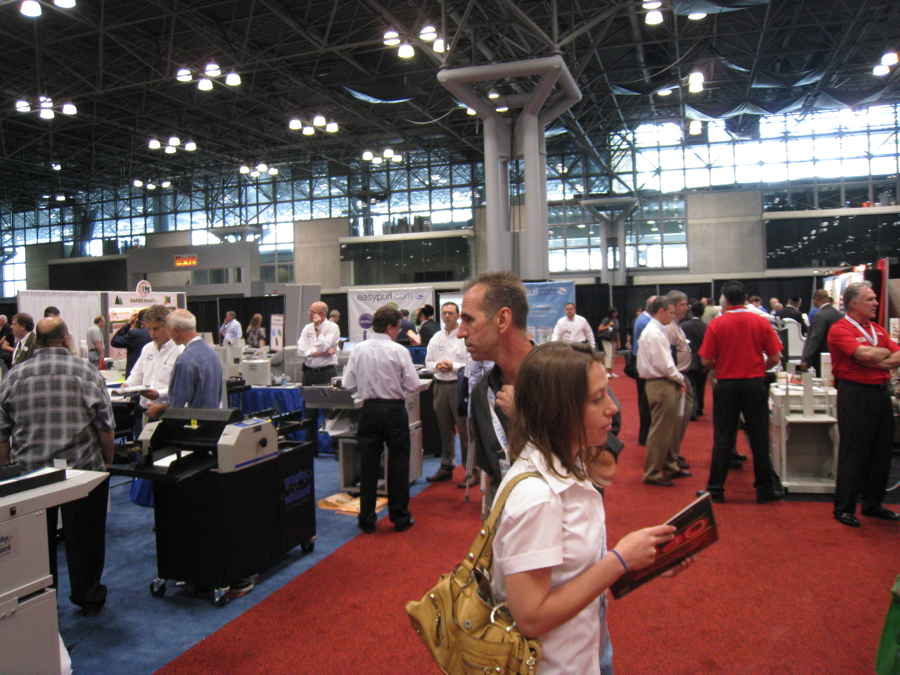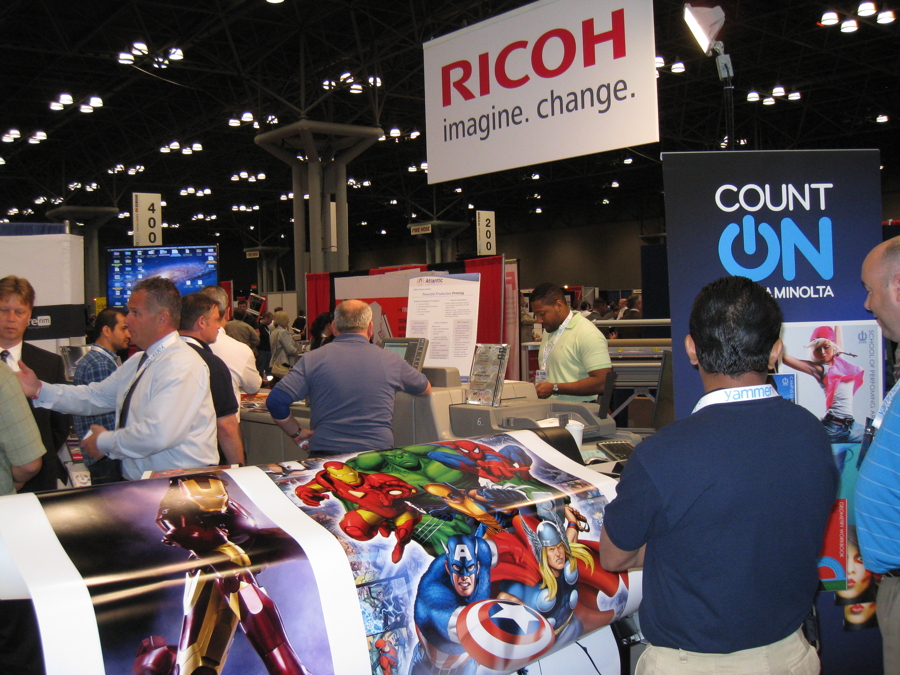 Those who remember the On Demand shows in their heyday as digital print equipment expos would have had some difficulty recognizing the event bearing that title at the Jacob K. Javits Convention Center last week. Although the name remains, not much else of On Demand’s original look, feel, and purpose is still there. The event has moved in a different direction, and hard-copy output doesn’t appear to have made the move with it.
Those who remember the On Demand shows in their heyday as digital print equipment expos would have had some difficulty recognizing the event bearing that title at the Jacob K. Javits Convention Center last week. Although the name remains, not much else of On Demand’s original look, feel, and purpose is still there. The event has moved in a different direction, and hard-copy output doesn’t appear to have made the move with it.
Questex Media Group, the producer of On Demand, says that the conference now is dedicated to ‘the technologies that monetize, optimize, and control content.” Co-located with On Demand at Javits was another Questex property, info360, a seminar program for IT professionals. Questex says that together, On Demand and info360 constitute “the largest enterprise IT event in North America.” Each conference was supported by exhibits, with info360 accounting for about twice as many of the 120-plus booths as On Demand.
On Demand’s profile has changed in other ways as well. It no longer shares venues with the AIIM conference, its previous expo companion, which now has a separate event of its own. Its days as a traveling show, likewise, seem to be behind it. On Demand also has been produced in Philadelphia and Washington, D.C., but a spokesperson for Questex said that New York City, with its heavy concentration of IT professionals, probably will be its permanent home from now on. But this does not necessarily mean another engagement at Javits. When On Demand returns next year, said the spokesperson, its conference setting probably will be a hotel.
Last week (June 13-14), the program was organized around four tracks: content creation, content delivery, marketing technology, and social and mobile business. On the expo floor, in a sliver of the space that On Demand once occupied at Javits, the stands and the pipe-and-drapes variously belonged to four “technology pavilions”: mailing and fulfillment, cross media, digital workflow, and what Questex calls “SoMoLo.” This denotes, according to Questex, social, mobile, and local platforms for content creation and distribution. (A special program focused on this niche, dubbed SoMoLo@NY, was co-located with the info360 conference.)
Given the sharp shift in emphasis, it wasn’t surprising that the show floor bore little resemblance to the equipment-heavy displays of earlier editions of On Demand. HP and Kodak had booths, but anyone looking for Indigo or NexPress presses in them searched in vain—both companies used their space to promote scanners and document management solutions, not digital production printing. Makers of conventional printing equipment were not represented at all, having long ago failed to gain traction in the market segment for which On Demand was first conceived.
Nevertheless, there were a few familiar elements from earlier, more production-centric On Demand shows, and even a few pieces of production equipment. These were courtesy of Atlantic, a provider of imaging, printing, and office support services, which had a Konica Minolta bizhub C8000 press, a Ricoh Pro C651EX press, and a wide-format inkjet printer in operation on the floor. Spiel Associates, Graphic Whizard, Duplo USA, and Spiral Binding James Burn USA, all stalwart exhibitors at metro area trade shows, added their presence and their offerings of production equipment.
Two printing trade associations also did what they could to preserve some of the flavor of the original On Demand. Printing Industries Alliance (PIA), representing graphics businesses in New York, northern New Jersey, and northwestern Pennsylvania, was on hand to promote its upcoming Franklin Event and other activities for firms in the region. Printing & Graphics Association MidAtlantic (PGAMA) used the opportunity to talk about its Addy Award-winning PrintGrowsTrees campaign.
The On Demand conference program, which consisted of about 30 sessions, stuck mostly to content creation and distribution in digital form. A few of the presentations addressed hard-copy production: for example, “Hybrid Workflows: Making Digital and Offset Work Together.” A session titled, “From Gutenberg to Zuckerberg: Merging Cross Media Marketing and Print,” also acknowledged print’s place in the media mix.
Featuring 70 sessions organized into eight tracks, the info360 program covered a range of IT-oriented subjects including information sharing, social media, workgroup collaboration, and online content strategy. The companion program, SoMoLo@NY, focused on leveraging its trio of media for outreach to consumers.
We wish Questex and its partners success in their efforts to reposition On Demand for a new audience in a redrawn media landscape. But, its change in character also is a bit disheartening for those who can recall the days when the metro area’s print and graphic communications industry was capable of supporting production-focused trade shows of its own.
Graph Tech, Graph Expo East, Graphic Communications Day, and other local events have come and gone as venues where the big iron and the big grey boxes could hold sway. But now that On Demand has evolved beyond providing that opportunity, it’s hard to see how a show dedicated to production technology could ever be put on in the region again. The expense and the logistical difficulty probably have stopped the presses permanently as exhibition assets for the tristate area.
For another perspective on what has happened to On Demand, see this commentary.


